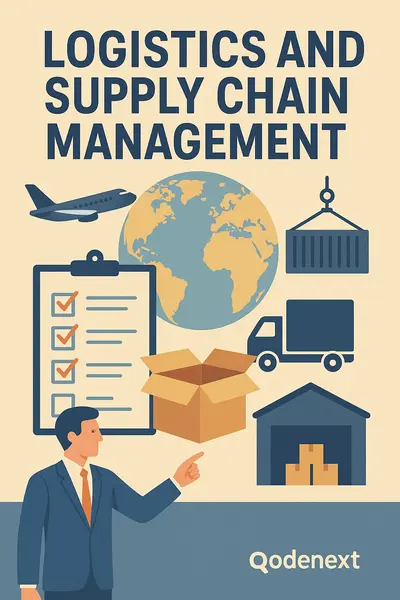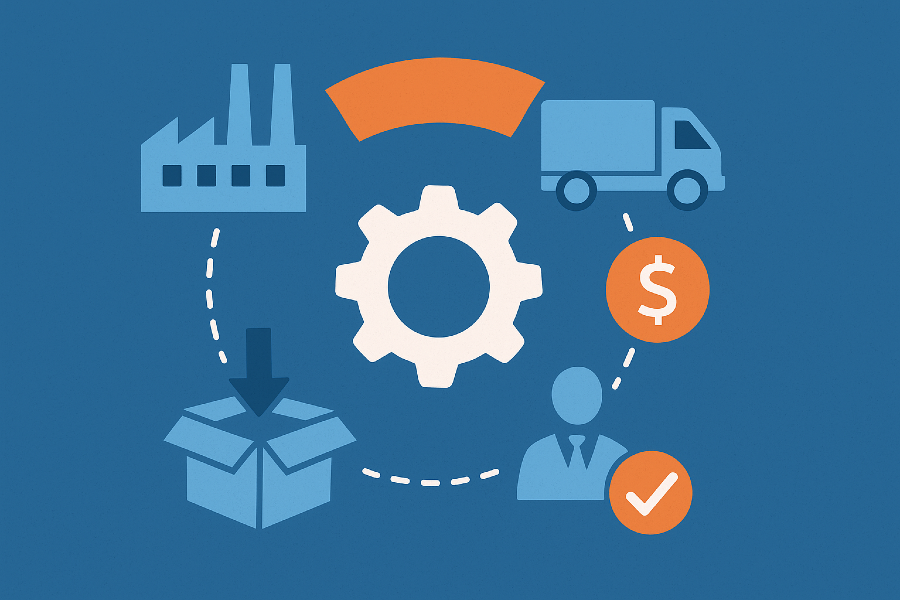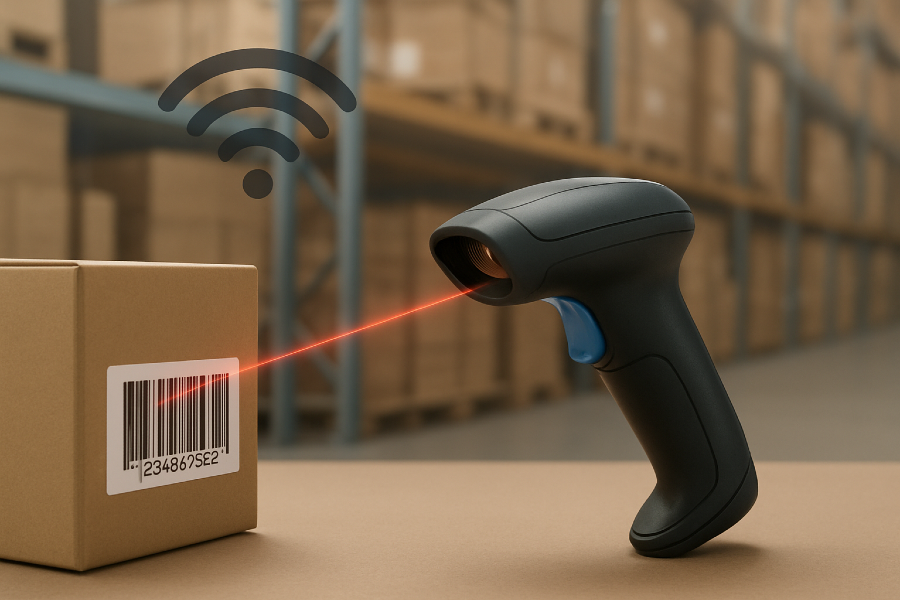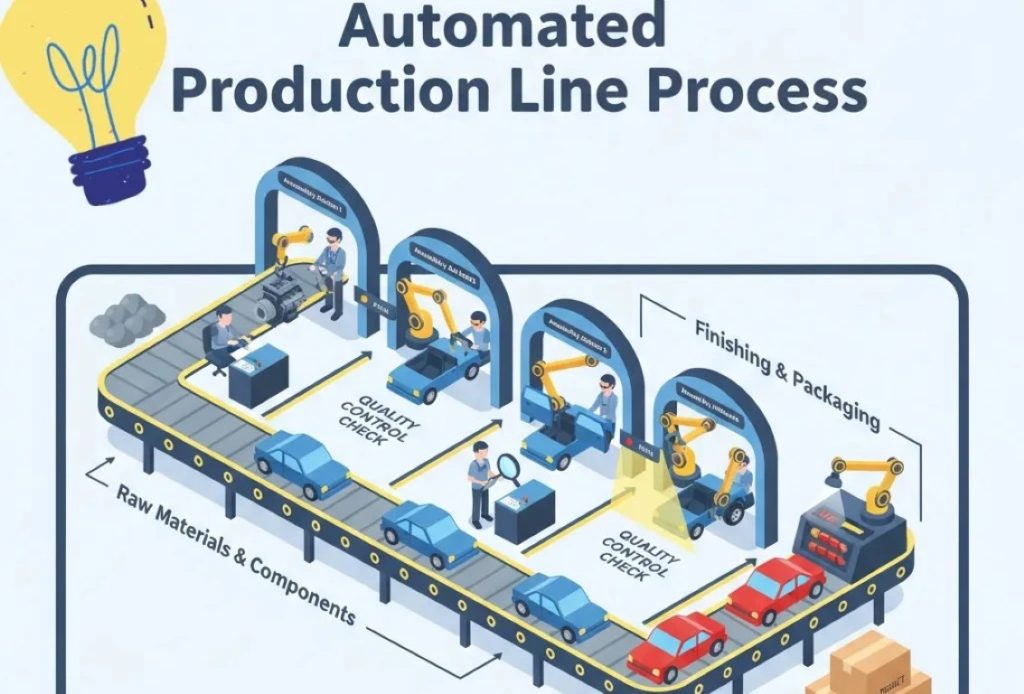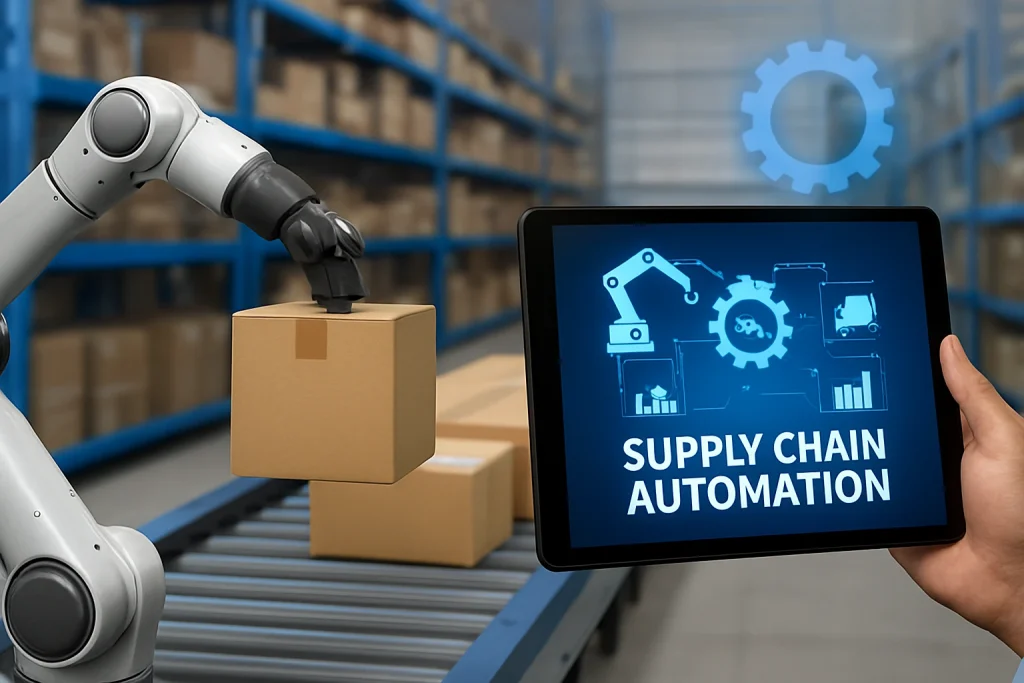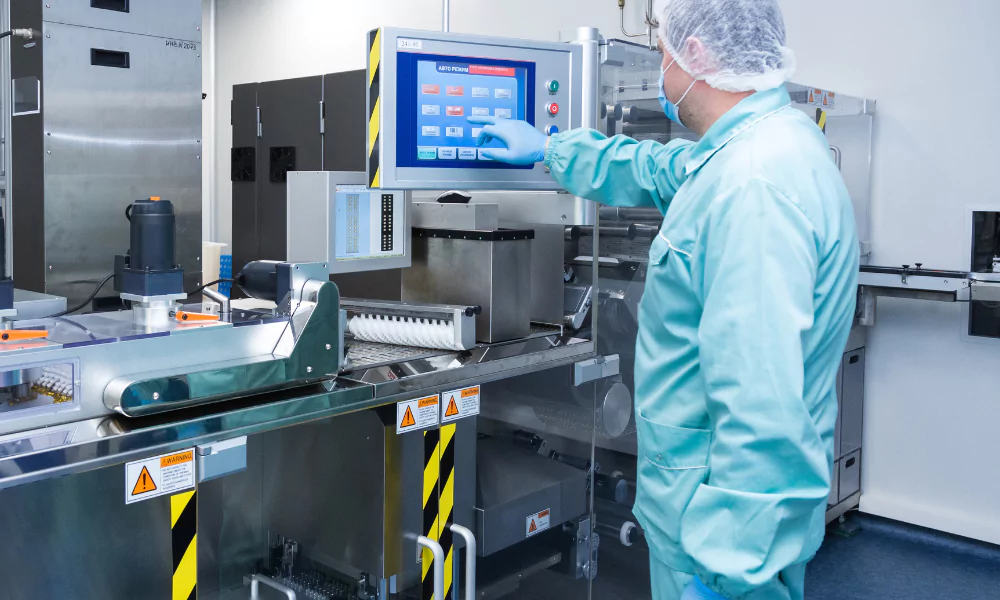
Manual labelling is usually the standard process for small production volumes and simple applications. But what happens when the production volume increases as per the demands? As requirements become more complicated, automation emerges as the saviour for industries. Even in labelling products using an automated label applicator helps you keep up with the increased demand. This also increases output without needing to hire more manual labour, improves product quality and decreases errors and mislabelled products.
Labelling products accurately and efficiently is crucial in various industries such as manufacturing, food, beverage, pharmaceuticals and logistics. As businesses strive to streamline their operations and reduce costs, automated labelling machines have emerged as a solution.
To know more about how they work read-What Is a Label Applicator and How to Choose One?
Why Use Automated Label Applicator Systems
If your business has expanded to the point where labelling is getting in the way, the solution lies in getting an automatic label printer and applicator. Here are a few reasons why you should be using an automatic barcode label applicator:
1. Speed: Faster and Efficient Labelling
One of the main advantages of automatic labelling systems is their speed. Compared to manual or semi-automatic systems, these automatic labellers can tag products several times faster.
The increased speed not only enhances efficiency but also enables businesses to expand production seamlessly, avoiding bottlenecks in labelling. Whether dealing with hundreds or thousands of products per hour, automatic labelling systems handle the task effortlessly.
Additionally, these systems are engineered to sustain a consistent production pace, negating the necessity for pauses or tweaks. This guarantees a streamlined workflow, preventing the labelling station from hindering the production line.
In contrast, manual labelling requires manual adjustments, which are both time-consuming and limited in scope. Transitioning to automated label applicators amplifies application speed, minimises waste, and elevates the aesthetic appeal of your products.
2. Accuracy: Minimising Human Error
Human error is bound to happen in the labelling process. Misplacing labels, applying them with insufficient pressure, or getting the orientation of the container wrong are just a few examples of mistakes that can happen.
As the number of labels in a product increases, so does the potential for errors. Additionally, if you need to include expiration dates, barcode labels or other information, the chances of errors further multiply.
Automatic labelling systems offer a solution to these challenges by removing humans from the labelling process. These machines are designed to apply labels with precision and consistency, greatly reducing the risk of errors. They can track and adjust label applications, ensuring proper placement and alignment.
There are many ways automated label applicators can streamline the supply chain processes of labelling products. Not only do they cut down time but also lower manual labour. Find out how.
3. Lower Labour Demands= Increased Efficiency and Satisfaction
Another significant advantage of automatic labelling systems is their ability to lower labour demands. With manual or semi-automatic labelling machines, at least one employee needs to be present for the labelling process. However, with an automated label applicator, labour is only needed to load label reels and occasionally check for errors.
The reduction in labour requirements allows businesses to allocate their staff to more valuable tasks, increasing overall productivity. This automatic hand-held label applicator also has the advantage of improving employee satisfaction.
Manual labelling is monotonous and repetitive work, leading to a high turnover rate. By automating the labelling process, businesses can provide their employees with more engaging and fulfilling roles, ultimately leading to higher job satisfaction and employee retention.
4. Safety: Mitigating Workplace Injuries
Repetitive injuries are common in industries that rely on manual labelling. The repetitive nature of the task, localised pressure on specific body parts, prolonged posture and excessive force exertion can all contribute to workplace injuries.
With a product label applicator, companies can significantly reduce manual labelling. By reducing the repetitive tasks associated with RMIs and MSDs, these machines foster a safer workplace for employees. This holds particular significance amidst the COVID-19 pandemic, prompting businesses to reconsider their workforce arrangements.
Embracing automatic labelling systems enables businesses to limit the presence of individuals on the factory floor, thereby mitigating the risk of infection and safeguarding the well-being of their workforce.
Not just safety, using an automated label applicator also ensures flexibility. This machine makes tagging and marking of the products an easy process which makes it faster to divide products based on certain parameters.
5. Flexibility: Accommodating Different Sizes and Configurations of Labels
Manual labelling systems could not handle a wide range of label sizes and configurations. Automatic labelling systems, on the other hand, offer greater flexibility. Companies can set up these machines to accommodate various label sizes, allowing businesses to use a single machine for different product configurations.
Automatic labelling systems usually have a colour screen HMI (human-machine interface) which enables operators to make adjustments, monitor, control and load different label formats.
This kind of flexibility is crucial when it comes to challenging labelling tasks. Custom labelling solutions can tackle even the most difficult containers like bulk pails or bottles that require multiple labels.
The ability to handle different label sizes and configurations provides businesses with options and accuracy that manual labelling systems cannot achieve.
6. Focused Design: Custom Solutions
Another advantage of automated label applicators is that they can handle common labelling tasks but they may not be suitable for more complex labelling requirements. Automatic labelling systems offer a range of custom solutions designed to tackle the most challenging labelling problems.
For example, if you need to label bulk pails, there are automatic labelling machines specifically designed to handle these heavy containers while preventing skewing during the label application.
If you need multiple labels on a single bottle, then there are vertical trunnion roller labelling and bottle applicators available that you can configure front, back, seal and neck labels.
These specialised automated label applicators provide businesses with the flexibility and accuracy needed to meet unique labelling challenges.
Better Control: Enhanced Label Placement and Quality
Product label applicators offer operators greater control over label placement and quality compared to manual labelling. With advanced colour screen HMI, operators can make accurate and precise adjustments as needed, ensuring labels are applied with precision and accuracy.
Such a level of control allows businesses to achieve consistent label placement. This, in turn, enhances the overall appearance of the products.
Also, an automated label applicator stores calibration information. This enables the operators to set up the machine for a specific label once and easily recall those settings when switching back to that product.
It saves time and reduces the risk of errors associated with manual adjustments. Operators can quickly switch between different label settings. Such a level of control and convenience contributes to improved label placement and overall product quality.
FAQs: Streamlining Operations with Automated Label Applicator Systems
How does a label applicator work?
A label applicator works by dispensing from a roll, applying adhesive and affixing them onto products or packaging, often using pressure, rollers or suction mechanisms for accurate placement.
How does an automatic front and back labelling machine work?
This machine dispenses labels, applies adhesive and affixes them simultaneously on the front and back of the products. Usually, synchronised conveyor systems work like this for efficiency.
What are the main components of an automatic labelling machine?
The primary parts include a label dispenser, conveyor system, application mechanism (such as rollers or tamp pads), control panel, and sensors for precision placement.
What quality standards should an automatic labelling system comply with?
Such a system should comply with quality standards such as ISO 9001 for overall quality management, ISO 22000 for food safety, and ANSI/UL standards for electrical safety.
Conclusion
Embracing automated label applicator systems revolutionises production processes. It also enhances efficiency, accuracy, and safety. These systems do more than expedite labelling. They also minimise errors, optimise labour, and ensure compliance with stringent quality standards. For more such labelling solutions in supply chains visit Qodenext.


